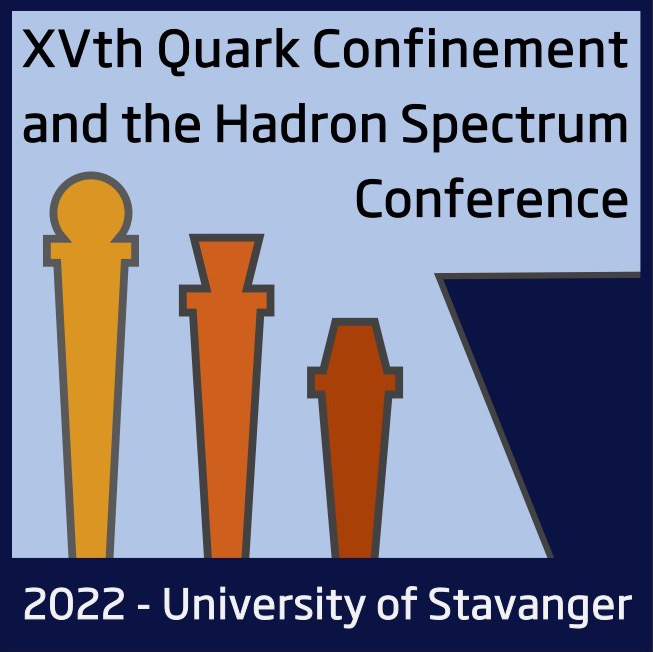Speaker
Description
After examining the mass and pressure decompositions of hadrons in the stress-energy-momentum tensor, it is found that the glue part of the trace anomaly can be identified as originated from the vacuum energy of the glue condensate and gives a CONSTANT restoring pressure which balances that from the traceless part of the Hamiltonian (quark and glue kinetic energies) to confine the hadron, much like the cosmological constant Einstein introduced for a static universe. From a lattice calculation of this anomaly in the charmonium, we deduce the associated string tension which turns out to be in good agreement with that from a Cornell potential calculation which fits the charmonium spectrum.
One notices that the analogy extends to type II superconductors where the potential for the magnetic field in the Ginzburg-Laudau equation is the number of Cooper pairs times the energy gap of each pair. This gives a negative pressure to balance the pressure from the magnetic energy in the normal phase. Thus, all three confinement mechanisms mentioned above are related to the presence of a condensate.
A misery of why the pion mass approaches zero at the chiral limit is solved. The pion mass can be expressed by the sigma term and the trace anomaly. While the sigma term vanishes as \sqrt{m_q}, the trace anomaly has no quark mass dependence. Why does it approach zero at the chiral limit? A lattice calculation of the trace anomaly reveals that it changes sign in its spatial distribution as the quark mass decreases which is like the ring-shaped type II superconductor. This is perhaps the only example that the structure of the conformal symmetry breaking is dictated by the chiral symmetry breaking.

